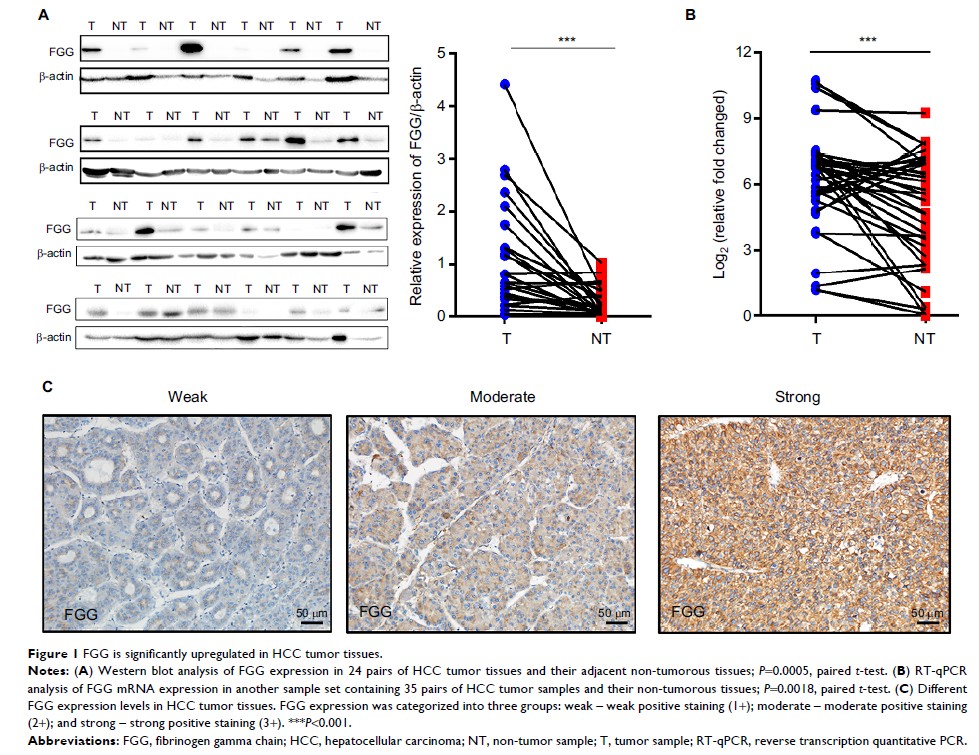108605
论文已发表
注册即可获取德孚的最新动态
IF 收录期刊
- 3.4 Breast Cancer (Dove Med Press)
- 3.2 Clin Epidemiol
- 2.6 Cancer Manag Res
- 2.9 Infect Drug Resist
- 3.7 Clin Interv Aging
- 5.1 Drug Des Dev Ther
- 3.1 Int J Chronic Obstr
- 6.6 Int J Nanomed
- 2.6 Int J Women's Health
- 2.9 Neuropsych Dis Treat
- 2.8 OncoTargets Ther
- 2.0 Patient Prefer Adher
- 2.2 Ther Clin Risk Manag
- 2.5 J Pain Res
- 3.0 Diabet Metab Synd Ob
- 3.2 Psychol Res Behav Ma
- 3.4 Nat Sci Sleep
- 1.8 Pharmgenomics Pers Med
- 2.0 Risk Manag Healthc Policy
- 4.1 J Inflamm Res
- 2.0 Int J Gen Med
- 3.4 J Hepatocell Carcinoma
- 3.0 J Asthma Allergy
- 2.2 Clin Cosmet Investig Dermatol
- 2.4 J Multidiscip Healthc

FGG 通过激活上皮细胞向间充质细胞的转变促进肝细胞癌细胞的迁移和侵袭
Authors Zhang X, Wang F, Huang Y, Ke K, Zhao B, Chen L, Liao N, Wang L, Li Q, Liu X, Wang Y, Liu J
Received 20 September 2018
Accepted for publication 20 December 2018
Published 19 February 2019 Volume 2019:11 Pages 1653—1665
DOI https://doi.org/10.2147/CMAR.S188248
Checked for plagiarism Yes
Review by Single-blind
Peer reviewers approved by Dr Cristina Weinberg
Peer reviewer comments 3
Editor who approved publication: Dr Antonella D'Anneo
Purpose: The aim
of this work was to investigate the clinicopathological significance of
fibrinogen gamma chain (FGG) and its biological roles during hepatocellular
carcinoma (HCC) development and progression.
Methods: The
expression of FGG was examined by Western blot and reverse transcription
quantitative PCR in two different sample sets, including 24 or 35 pairs of HCC
tumor tissues and their corresponding adjacent non-tumorous tissues. Afterward,
association analysis between the expression of FGG and clinicopathological
characteristics was systematically analyzed in 79 HCC patients. Subsequently,
the mobility and invasiveness of SK-HEP-1 cells with FGG overexpression or
knockdown were evaluated by transwell assay and wound healing assay.
Additionally, the expressions of epithelial to mesenchymal transition
(EMT)-associated markers were also detected in FGG overexpressed or silenced
SK-HEP-1 cells.
Results: The
expression of FGG was significantly increased in primary HCC tissues comparing
with its corresponding adjacent non-tumorous tissues. Clinical pathological
analysis demonstrated that upregulation of intracellular FGG was significantly
associated with increased vascular invasion, more satellite nodules, and more
advanced TNM stage, and HCC patients with stronger expression of FGG had a
higher recurrence rate and correspondingly a shorter overall survival time.
Meanwhile, the high expression of FGG was also proved to be an independent risk
factor for disease-free survival after surgical resection. In vitro phenotype
studies showed that overexpression of FGG could promote the migration and
invasion in SK-HEP-1 cells; conversely, these phenotypes could be significantly
inhibited by knocking down the expression of FGG. Mechanism studies indicated
that FGG could promote the migration and invasion through EMT signaling pathway
by regulating the expressions of Slug and ZEB1.
Conclusion: FGG
played important roles in enhancing cancer cell motility and invasiveness
through EMT signaling, and might serve as a potential prognostic biomarker for
HCC patients.
Keywords: hepatocellular
carcinoma, fibrinogen gamma chain, epithelial to mesenchymal transition,
recurrence, metastasis
